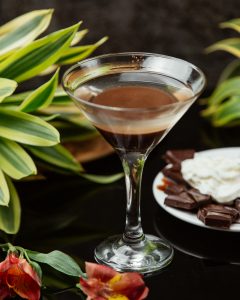
Homecoming
By Kate Morton | Moderated by Celinés | Historical Fiction | Mystery
About the Book
Adelaide Hills, Christmas Eve, 1959: At the end of a scorching hot day, beside a creek in the grounds of a grand country house, a local man makes a terrible discovery. Police are called, and the small town of Tambilla becomes embroiled in one of the most baffling murder investigations in the history of South Australia.
Many years later and thousands of miles away, Jess is a journalist in search of a story. Having lived and worked in London for nearly two decades, she now finds herself unemployed and struggling to make ends meet. A phone call summons her back to Sydney, where her beloved grandmother, Nora, who raised Jess when her mother could not, has suffered a fall and is seriously ill in hospital.
At Nora’s house, Jess discovers a true crime book chronicling a long-buried police case: the Turner Family Tragedy of 1959. It is only when Jess skims through its pages that she finds a shocking connection between her own family and this notorious event — a mystery that has never been satisfactorily resolved.
An epic story that spans continents and generations, Homecoming asks what we would do for those we love, how we protect the lies we tell, and what it means to come home. Above all, it is an intricate and spellbinding novel from one of the finest writers working today.
Plot Summary
Homecoming alternates between two timelines, 1959 and 2018, to reveal the truth behind the unsolved Turner Tragedy. In 1959, Isabel Turner and her children are found dead after a picnic, with no clear cause of death. The community of Tambilla settles on the theory that Isabel poisoned her family and herself, and the fate of her missing baby, Thea, remains a mystery.
The Investigation Unfolds
In 2018, journalist Jess Turner returns to Australia after her grandmother, Nora, is hospitalized. Jess discovers a book about the tragedy at Nora’s house and begins her own investigation. The book, written by Daniel Miller, acts as an embedded narrative, providing a firsthand account of the events. Through her research, Jess learns that Nora, her grandmother, was at the Turner family property, Halcyon, at the time of the tragedy, and that she gave birth prematurely to a daughter, Polly, who is Jess’s mother.
After Nora dies, Jess’s mother, Polly, returns. Jess is resentful of her mother, believing that Polly abandoned her as a child. A story Nora has told them for years—that Polly once tried to smother Jess—has solidified this belief. However, Jess finds evidence that Nora once told the same story about Isabel, leading Jess to question everything her grandmother ever told her.
The Big Reveal
In an effort to reconnect, Polly helps Jess with her investigation. They gain access to Daniel Miller’s interview notes, which reveal the fate of Isabel’s baby, Thea. The interview explains that Nora’s own baby died shortly after birth, and that Polly is actually Thea. Nora buried her own daughter and secretly raised Thea as her own.
The final pieces of the mystery fall into place when Jess discovers that Isabel was having an affair with Percy Summers, a local man, and Thea was their child. Percy’s son, Marcus, discovered the affair and planned to poison Isabel. However, his mother, Meg, found out and, in an act of vengeance, administered the fatal dose herself.
At the end of the novel, Jess and Polly, with a new understanding of Nora’s deceptions, begin to rebuild their relationship. They travel to Tambilla to visit Halcyon and finally connect with their Summers relatives, bringing the long-buried story full circle.
About the author

Is an Australian author. Morton has sold more than 16 million books in 42 countries, making her one of Australia’s “biggest publishing exports”. The author has written six novels: The House at Riverton (The Shifting Fog), The Forgotten Garden, The Distant Hours, The Secret Keeper, The Lake House, and The Clockmaker’s Daughter (published in September 2018). Her seventh book, Homecoming, published in April 2023.
Kate Morton was born in South Australia, grew up in the mountains of south-east Queensland, and now lives with her family in London and Australia. She has degrees in dramatic art and English literature, and harboured dreams of joining the Royal Shakespeare Company until she realised that it was words she loved more than performing. Kate still feels a pang of longing each time she goes to the theatre and the house lights dim.
“I fell deeply in love with books as a child and believe that reading is freedom; that to read is to live a thousand lives in one; that fiction is a magical conversation between two people – you and me – in which our minds meet across time and space. I love books that conjure a world around me, bringing their characters and settings to life, so that the real world disappears and all that matters, from beginning to end, is turning one more page.”
Flora & Fauna of the book

Koohaburra
The blue-winged kookaburra is a large species of kingfisher native to northern Australia and southern New Guinea.

Currawong
The black currawong (Strepera fuliginosa ), also known locally as the black jay, is a large passerine bird endemic to Tasmania and the nearby islands within the Bass Strait. One of three currawong species in the genus Strepera, it is closely related to the butcherbirds and Australian magpie within the family Artamidae.

Red wattlebird
Is a passerine bird native to southern Australia. At 33–37 cm (13–14+1⁄2 in) in length, it is the second largest species of Australian honeyeater.

Carved Wren
The gift Percy had for his wife when he discover the bodies of The Turners. He lost it on the grounds of Halcyon.

Koohaburra
is a bird in the honeyeater family, Meliphagidae, and is endemic to eastern and southeastern Australia. This miner is a grey bird, with a black head, orange-yellow beak and feet, a distinctive yellow patch behind the eye, and white tips on the tail feathers.

Wren
The superb fairywren is a passerine bird in the Australasian wren family, Maluridae, and is common and familiar across south-eastern Australia.


Australian Magpie
Iis a black and white passerine bird native to Australia, New Zealand and southern New Guinea.. Described as one of Australia's most accomplished songbirds, the Australian magpie has an array of complex vocalisations.

Acacia pycnantha, most commonly known as the golden wattle, is a tree of the family Fabaceae native to southeastern Australia. It grows to a height of 8 m and has phyllodes instead of true leaves.

“Mrs. Turner opened her journal to a fresh page and recorded the date in her precise hand, was the same as ever: directly ahead, on the other side of the driveway, the summertime foliage of the enormous oak was so dense that she could barely see the children’s tree house in the middle of the branches.”
Image is reference of oak tree with tree house.

Wallnut Tree
The bunyip is a creature from the aboriginal mythology of southeastern Australia, said to lurk in swamps, billabongs, creeks, riverbeds, and waterholes.
Bunyip. According to legend, a man-eating monster once lived in the rivers, lakes and swamps of Australia. Its howl carried through the night air, making people afraid to enter the water. At night, the bunyip prowled the land, hunting for women and children to eat.

In Australia, the strangeness came from the land itself. Its mystery and meaning existed outside her own language, at any rate. Her children had brought home a tale once, from wherever children learnes the things the knew, about a bunyip. "A WHAT? "she'd asked. "A bunyip", they'd said appraising her with wide, direct gazes that implied of course. Mrs. Turner found it a somewhat unsettling proposition to raise children in a land other than the one which she'd been a child herself. Their point of reference were different from her own and they sometimes felt quite foreign.
Hacyon, could be both a noun and an adjective, the former describing a type of kingfisher bird, the latter meaning “calm, peaceful; happy, prosperous, idyllic.” But neither suggested itself as particularly burdensome.
The Turnes had called the house “Halcyon” in an attempt to “make it their own”. The name had been Mr. Turner’s ideas, an one to which he’d become very attached. Indeed, he had already placed his order with Galloway Bros. Signwriters in Double Bay when he presented the name to his wife for her consideration. She had agreed without debate – as with the number of tiers on the wedding cake, she cared little what they called the house. The suggestion had seemed romantic, very much in keeping with his nature; it was his nature, after all, that had attracted her in the first place, shining as it had, like a rare and precious gem, in the grime of wartime London.
Family Tree
Based on what we've read so far.

Taste it, Jummy drinks for the meetings.

6 Ingredients
Mango Martini
- 55g (1/4 cup) caster sugar.
-
300g frozen chopped mango
-
100ml vodka
-
60ml (1/4 cup) fresh orange juice
-
Fresh mint leaves, to decorate
-
Dehydrated orange slices, to decorate (optional, see tip)

6 Ingredients
Black Cat Martini
-
Black Cats lollies, to serve
-
90ml chocolate liqueur
-
60ml (1/4 cup) vanilla liqueur
-
30ml Baileys Original Irish Cream Liqueur
-
Black Cat vodka
-
170g pkt Black Cats lollies
-
500ml (2 cups) vodka
5 Ingredients
Piña Colada Slushie
-
55g (1/4 cup) caster sugar
-
300g frozen chopped pineapple
-
100ml Malibu
-
60ml (1/4 cup) coconut water
-
Coconut flakes and pineapple leaves, to decorate


8 Ingredients
Lemon Drop Spritz
-
60ml (1/4 cup) vodka
-
60ml (1/4 cup) triple sec
-
80ml (1/3 cup) fresh lemon juice, plus extra, to serve
-
60ml (1/4 cup) sugar syrup (see note)
-
Ice cubes, to serve
-
Lemon jelly crystals, to decorate
-
Sea salt flakes, to decorate
-
160ml (2/3 cup) chilled mineral water
Book Trail
Buy the book:
Character Analysis
Jess (Jessica) Turner
is the protagonist of Homecoming. Approaching 40, she is a struggling journalist living in London, burdened by financial problems and a recent breakup. Her life lacks direction, a sense of home, and belonging. Her main character arc is her search for these things. Initially, she finds a sense of belonging in literature, as London feels familiar to her from the English Victorian novels she has read. However, after 10 years, she still feels like an outsider. Her investigation into the Turner family tragedy is an attempt to find the truth, but it also becomes a journey of self-discovery, forcing her to confront the painful truths about her family’s history and her own identity.
Polly Turner / Thea Turner
is Jess’s mother, and for most of the novel, she is known only through Nora’s stories. Nora portrays Polly as fragile and delicate, and Jess is deeply angry at her for what she perceives as Polly’s abandonment. However, a shocking revelation brings Polly from the periphery to the center of the story: Polly is not Nora’s daughter but is actually Thea, Isabel’s missing baby. With this reveal, Polly’s character is re-contextualized. She is revealed to be loving, perceptive, and patient. She works with Jess to solve the mystery and heal their relationship.
Nora Turner
is Jess’s grandmother and a central, yet largely silent, figure in the novel’s 2018 timeline. She is a powerful presence, and her fall and subsequent death set Jess on a path to uncover the family’s secrets. Nora’s motivations are complex; she is a privileged woman who is unable to carry a pregnancy to term. This, combined with her refusal to accept defeat, leads her to secretly raise Isabel’s baby, Thea, as her own daughter, Polly. Nora manipulates both Polly and Jess to maintain control and keep her granddaughter with her. Her actions create a rift in the family that is only beginning to be healed after her death.
Isabel Turner
an English scientist, is the victim at the heart of the Turner Tragedy. For nearly 60 years, the people of Tambilla believe she murdered her children and killed herself. However, Jess’s investigation proves she was innocent. Isabel was a victim of circumstance and a conspiracy. She was a woman who felt isolated in Australia and wanted to go back to England with her children. The revelation that she was poisoned by Percy’s wife, Meg, exonerates her character and rewrites the history of the tragedy.
Percy Summers
is a local grocer who discovers the Turner Tragedy. He is a man who gave up his dreams of travel to take over his family’s business. He had a secret affair with Isabel, and when he discovers that his own wife, Meg, was responsible for Isabel’s death, he is forced to confront the dark truth of his life. This revelation ultimately redeems Isabel’s character in his mind and allows him to look back on their affair in a positive light.
Finding Home and Belonging
The novel’s title, Homecoming, sets up a central theme about the nature of home and belonging. While Jess’s journey begins with a physical return to Australia, her true “homecoming” is an internal one. She initially tries to find a sense of belonging in a physical place, whether it’s London or her grandmother’s house in Australia. However, she discovers that her persistent feeling of loneliness isn’t tied to a location. As she realizes, “When someone said, ‘I want to go home,’ what they really meant was that they didn’t want to feel lonely anymore.” Both she and her mother, Polly, come to understand that home isn’t a physical place but a feeling of connection and belonging that can only be found in a relationship with another person. The novel suggests that the only way to truly banish loneliness is to find a sense of belonging with others.
Transforming History into Myth
Homecoming explores how a personal history can be transformed into a cultural myth. The novel traces the journey of the Turner Tragedy from a personal, unsolved mystery to a local legend. As the years pass, the accepted version of events—that Isabel murdered her children and herself—is solidified through retellings and popular media, like the book written by Daniel Miller. This process, as Jess observes, is a simple one: “tell a good story, tell it in simple language, tell it often.” The novel places the Turner Tragedy alongside other real-life Australian mysteries, emphasizing its transformation from a personal history into a myth that captures the public’s imagination. Morton also elevates the tragedy’s status by setting it against the backdrop of the ancient Australian landscape, highlighting how the personal story becomes just a small part of a much larger, timeless history.
Connection Through Literature
Literature serves as a powerful motif for connection and escape in the novel. Several characters, including Jess, Polly, Percy, and Isabel, are avid readers who use books to find solace in their loneliness. For Jess, a love of literature that began in childhood is her only consistent source of comfort, and she uses it to feel connected to a city she otherwise finds isolating. For Percy, books are a way to escape his polio and later, his mundane life. His love of literature becomes his first true connection with Isabel, and their shared love of books is a central part of their relationship. The novel shows how literature can not only provide an escape from reality but also create a deep and meaningful connection between people.
Book Club Questions for meetings:
- Qué les ha parecido el libro hasta ahora?
- Qué les han parecido los personajes de Jess, Nora e Isabel?
- El libro que va a escribir Jess, de qué creen que se va a tratar?
- Por qué creen que Polly dejó a Jess con Nora?
- Creen que fue difícil para Nora dejar que Jess se mudara a Londres?
- En el caso de Jess que vive en Londres lejos de su familia y que le escondía las situaciones por las que estaba pasando. ¿Ustedes creen que es correcto esconderle las situaciones difíciles a su familia? Les ha pasado?
- Quién le mandó la carta a Nora desde el sur de Australia?
- Qué les parece el comportamiento de Thomas Turner? Dejar a la familia sola para viajar por el mundo.
- Por qué creen que Isabel no pidió ayuda cuando se sentía sola y deprimida?
- Creen que el suicidio de la madre de Isabel tuvo un impacto en la decisión de Isabel de envenarse ella y a sus hijos?
- Cuál es punto que más les ha impactado del libro hasta ahora?
- Teorías para la segunda mitad...
Initial Impressions
-
How did you feel about the dual timeline structure? Did the past and present narratives intersect in a way that built suspense effectively? If you’ve read other books by Kate Morton, how did the structure of this one compare?
-
Did you make any predictions about the mystery as you were reading? Were your theories correct, or were you surprised by the final reveal?
-
What did you think of the descriptions of the Australian landscape? Did they feel compelling and useful to the story?
-
The novel has been compared to the Australian classic Picnic at Hanging Rock. If you’ve read it, what do you think of this comparison?
Personal Reflection and Connection
-
Have you ever uncovered a surprising family story or secret? How did it change your understanding of your family history?
-
The novel explores the meaning of “home.” What does that word mean to you? Is it a physical place, the people you are with, or something else?
-
Do you believe that learning about the past can help you better understand yourself in the present? Why or why not?
-
Tragedy shapes the characters’ lives in the novel. Did you find their responses to hardship and grief to be believable?
Societal and Cultural Context
-
The novel depicts the challenges women face in balancing personal desires with familial and societal obligations. What elements of this struggle remain constant across the two timelines?
-
How do the small-town Australian setting and depictions of rural life reflect broader cultural attitudes? Do you see these attitudes as unique to Australia?
-
How do class differences and social status influence the characters’ decisions and relationships in the story? What commentary does the novel offer on social class as a whole?
Literary Analysis
-
What is the purpose of the dual timeline structure? How do the parallels between the two storylines enhance the mystery?
-
How does the embedded narrative from Daniel Miller’s book shape Jess’s understanding of the tragedy and her own identity?
-
How does the author use dramatic irony throughout the story to create suspense and tension?
-
What is the significance of the rose garden in the novel?
-
What role do books and reading play in the story, especially for characters who are facing loneliness and isolation?
Creative Engagement
-
If you could interview Nora, what questions would you ask her about the choices she made and the secrets she kept?
-
Create a visual collage that captures the setting and atmosphere of the novel. Explain your choices and how they relate to the story.

June 2023 - Book Releases
You May Also Like

The Wilds – Elin goes to Portugal on a “real vacation”
August 5, 2024
The Heiress
October 9, 2024

